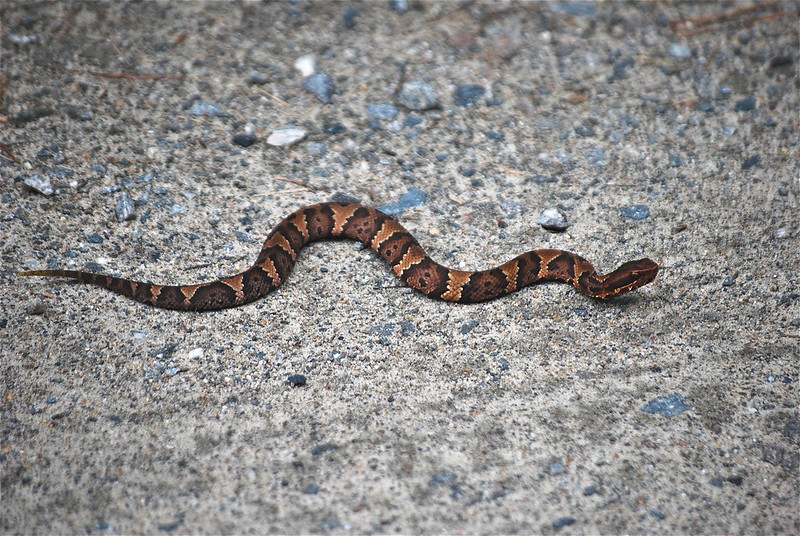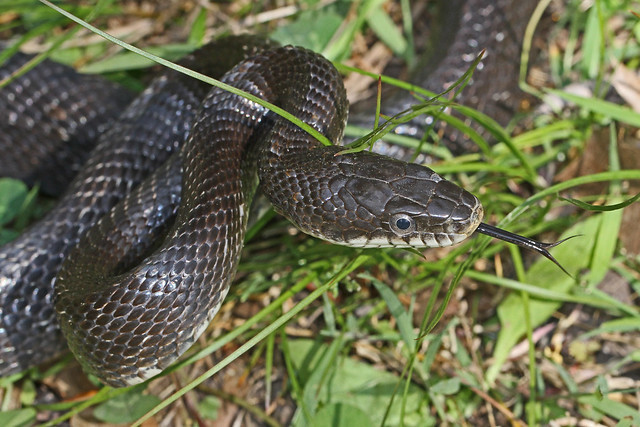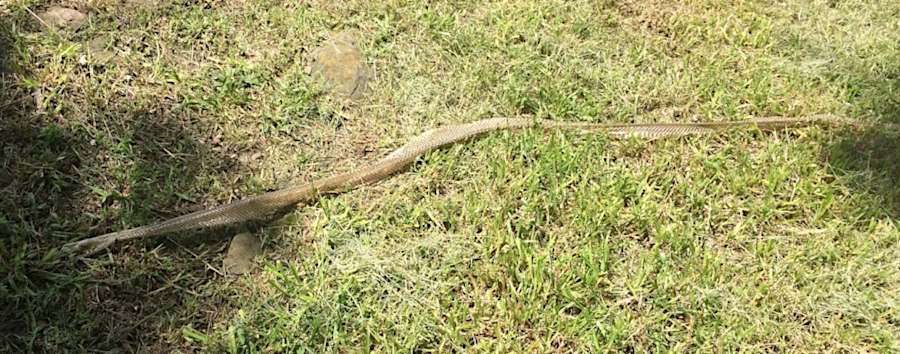
cottonmouth at False Cape State Park (City of Virginia Beach)
Source: Virginia Department of Game and Inland Fisheries (DGIF), Flickr

cottonmouth at False Cape State Park (City of Virginia Beach)
Source: Virginia Department of Game and Inland Fisheries (DGIF), Flickr
In the Blue Ridge and on other mountain ridges, copperheads and rattlesnakes gather together to overwinter in dens underneath rocks. When the Skyline Drive was being built in the 1930's, the operator of a power shovel excavated more than a bucketful of rocks. An observer later described the moment:1
There are three species of venomous snakes in Virginia - rattlesnakes, water moccasins (northern cottonmouth), and copperheads. Snakebites from poisonous species in Virginia are rarely fatal, and average just one every five years.
Timber rattlers are in the Blue Ridge. and canebrake rattlesnakes are found in the southeast corner of the state. Common blacksnakes, found throughout Virginia, may imitate rattlers by vibrating their tails.
Water moccasins are in creeks and wetlands in the southeastern corner of Virginia. A disjunct population also survives near the confluence of the James River and the Appomattox River.
Copperheads are the most common venomous snake in Virginia, found in all regions. They have a distinctive color pattern of brown patches and a triangular head.
The Eastern garter snake is the official snake of Virginia, as designated by the General Assembly in 2016. It is common and not poisonous. It is against the law to kill them, or any other snake in Virginia, with the exception of a poisonous snake threatening the health of people or farm animals. Snakes may evoke a fear reaction in people, leading to unnecessary murder of the wild creatures.2

black rat snake at Merrimac Farm Wildlife Management Area (Prince William County)
Source: Judy Gallagher, Flickr
Source: Wildlife Center of Virginia, The Snake's Important Role in Our Environment

black snake skin at Brawner Farm (Manassas National Battlefield Park)